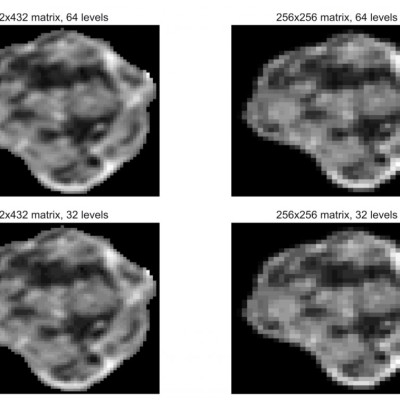Publication
Lack of robustness of textural measures obtained from 3D brain tumor MRIs impose a need for standardization
D. Molina, J. Pérez-Beteta, A. Martínez-González, J. Martino, C. Velasquez, E. Arana, V.M. Pérez-García
PLoS One 12(6):e0178843 (2017)
MOLAB authors
Abstract
Purpose: Textural measures have been explored as imaging biomarkers in cancer. The aim of this work was to study the robustness of textural measures in brain 3D magnetic resonance images (MRI) under dynamic range and spatial resolution changes.
Materials and Methods: Twenty patients harboring glioblastoma with pretreatment 3D T1-weighted MRIs were included in the study. Four different spatial resolution combinations and three dynamic ranges were studied for each patient. Sixteen three-dimensional textural heterogeneity measures were computed for each patient and configuration including co-occurrence matrices (CM) features and run-length matrices (RLM) features. The coefficient of variation was used to assess the robustness of the measures in two series of experiments corresponding to (i) changing the dynamic range and (ii) changing the matrix size.
Results: No textural measures were robust under dynamic range changes. Entropy was the only textural feature robust under spatial resolution changes (coefficient of variation under 10% in all cases).
Conclusion: Textural measures of three-dimensional brain tumor images are not robust neither under dynamic range nor under matrix size changes. Standards are to be fixed in order to use textural features as imaging biomarkers. The implications of this work go beyond the specific tumor type studied here and pose the need for standardization in textural feature calculation of oncological images.















